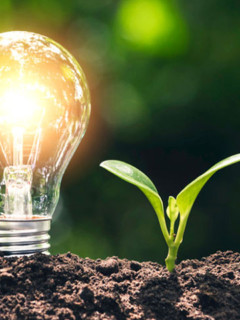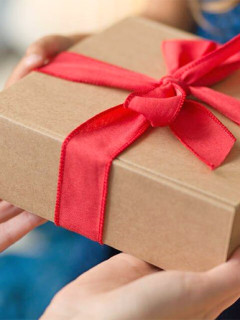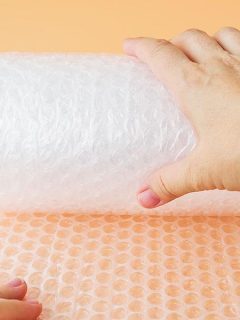Sustainability, ecology, eco-friendly packaging… All are closely related to what we call the “circular economy”. Thereby, today’s waste materials serve as tomorrow’s raw materials. The 5 waste streams we discuss below form the core of this cycle. Companies are encouraged (and to some extent even obliged) to sort and recover them from the source. In this article, we go through some facts and give tips that will help you keep everything on track.
Circular waste streams: a new life for industrial waste
The waste streams listed below are ‘circular’. This means that – after their recycling – they form the basis for new products. In doing so, we complete the raw materials circle: we thus use existing raw materials as much as possible, without mining new sources.
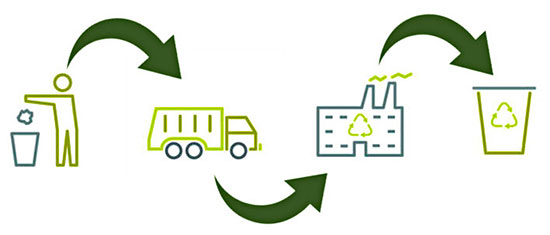
► Paper & cardboard
The first of the series of waste streams you are obliged to sort are paper and cardboard. Despite the development of digital technology, paper remains very popular. It accounts for 50% to 75% of office waste. Cardboard, in turn, is one of the most important materials in the packaging industry. It is therefore impossible to imagine our daily lives without it.
Paper and cardboard can be considered both an end product and a raw material. Once used, they are easily recyclable and can be reintegrated into the paper industry. On average, paper can be recycled up to 7 times:
- 70% is used to produce graphic paper (newspapers, leaflets, notebooks, etc.);
- 20% end up in cardboard packaging;
- 10% are used for other purposes(hygiene paper or insulation products).
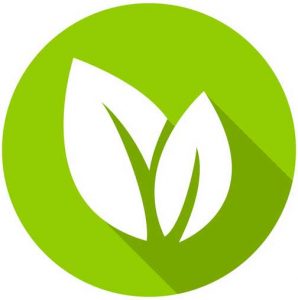 Cardboard = 100% renewable and recyclable. Consists of at least 70% recycled material at RAJA. A cardboard box can be recycled up to 10 times.
Cardboard = 100% renewable and recyclable. Consists of at least 70% recycled material at RAJA. A cardboard box can be recycled up to 10 times.
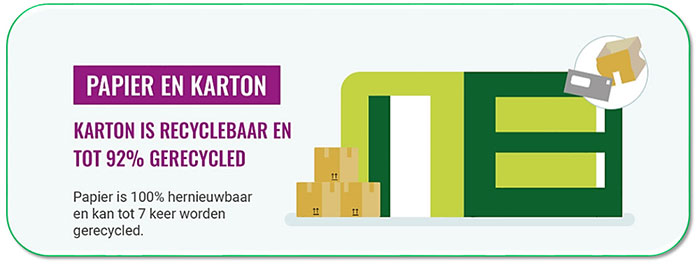
► Metal
Metals are real heavyweights in the recycling world. And you can take that both literally and figuratively. We can recycle them indefinitely, with no loss of quality.
Metal packaging should end up in the PMD bag or sorted with the residual waste.1 After their sorting, we divide them into 2 categories:
- Ferrous metals: with iron as the main component (also includes steel). Examples include canning jars, beverage cans, biscuit boxes, etc.
- Non-ferrous metals: copper and aluminium. Examples include dishes for prepared meals, aerosol cans, etc.
There are clear advantages to recycling metal, it is a real win-win. With every tonne of recycled aluminium, you can save 95% of the energy needed to produce primary aluminium. And up to 85% of the energy for every tonne of recycled steel. That equates to much less CO2 emissions.
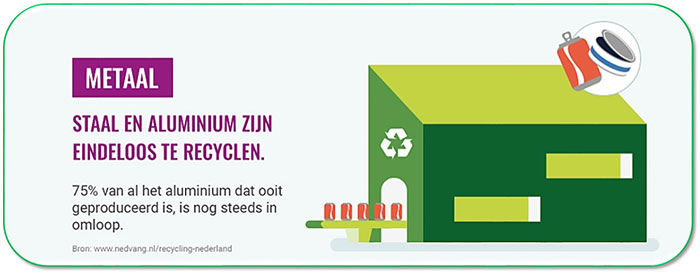
► Glass
Like metal, glass is also a 100% recyclable material. As a result, it has an almost infinite lifespan.2 By using recycled glass, a glass factory uses up to 25% less energy during the melting process. In the Netherlands, almost 90% of all glass is collected – one of the highest percentages in Europe.
Did you know that people sort glass several times? The recycling process involves an initial mechanical sorting to remove all metal elements (e.g. lids). This is followed by optical sorting: an infrared beam eliminates non-transparent, non-recyclable elements. Finally, a so-called cyclone removes the last elements before grinding and melting can begin.
An important note: during the sorting process, it is necessary to keep coloured and non-coloured glass separate. Only non-coloured glass can be used to make new non-coloured glass.
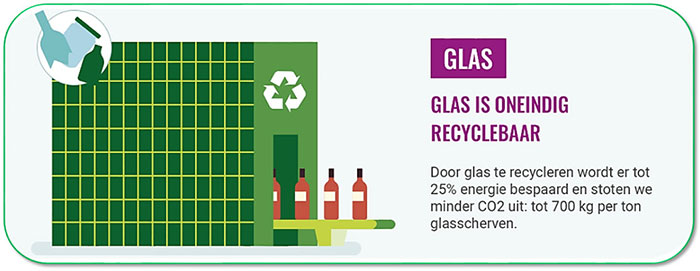
► Wood
The raw material that never stops growing: that’s wood! Based on its properties, wood waste streams are divided into a number of categories. In the trade, we speak of A, B and C wood:
- A-wood = untreated (e.g. raw wood, planks, pallets)
- B-wood = uncontaminated treated (e.g. doors, tables, cupboards)
- C-wood = contaminated treated (e.g. impregnated wood)
A and B wood are processed into wood chips. About 75% of this serves as raw material for the production of chipboards, pallets, briquettes, etc. The remaining 25% is used as green fuel for energy generation. C-wood is not used for recycling but is decomposed in an environmentally friendly way.
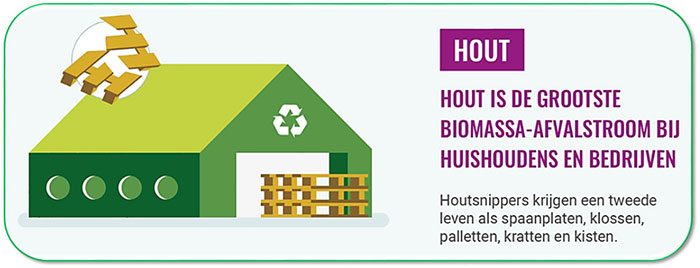
► Plastic
Of all waste streams, plastic is currently the one with the lowest recycling rates. In Europe, energy recovery is the most common method of disposing of plastic waste, followed by landfill. The Dutch consume around 26 billion plastic containers a year. Per person, this equates to 1,500 plastic packages per year, or four per day.3 In terms of plastic recycling, the Netherlands does relatively well at European level. Some 50% of plastic is reused.4
The biggest challenge in plastic recycling lies in the fact that there are so many different types of plastic. These have to be processed through different processes. It is therefore important to make the best possible use of the PMD bag. More information on sorting rules can be found via the Waste Separation Guide, among others.
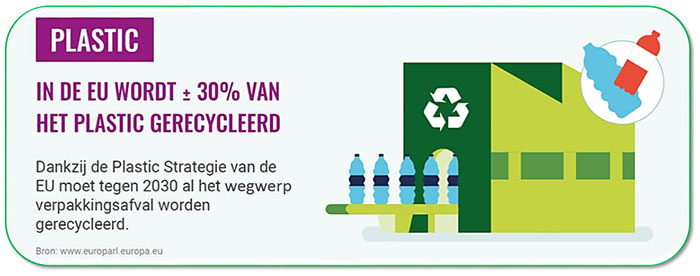
The future of plastic depends on the sorting process. The more efficiently we separate all types of plastic, the more plastic we can recycle and reprocess. After all, plastic still remains one of the best and most often recyclable wastes.
RAJA is happy to help you sort faster and easier. Use coloured waste bags and bins, for example. That way, you can keep the different waste streams in your business separate from the first step.
Check out RAJA’s sorting solutions here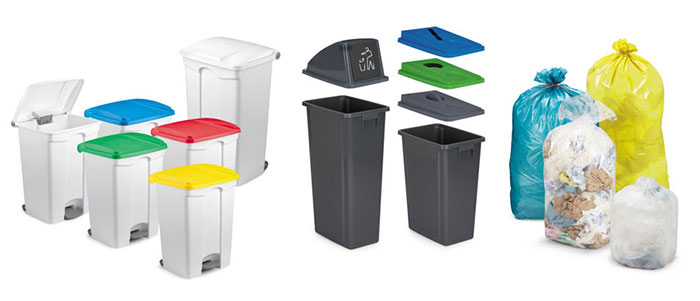
Sources:
1 www.nedvang.nl/recycling-nederland/blik-metaal/
2 www.nederlandseglasfabrikanten.nl/duurzaamheid/recycling-van-glas/
3 www.businessinsider.nl/ieder-jaar-verbruiken-nederlanders-26-miljard-plastic-verpakkingen-dat-aantal-blijft-stijgen-maar-daar-is-makkelijk-iets-aan-te-doen/
4 www.afvalfondsverpakkingen.nl/monitoring/publieksrapport/











